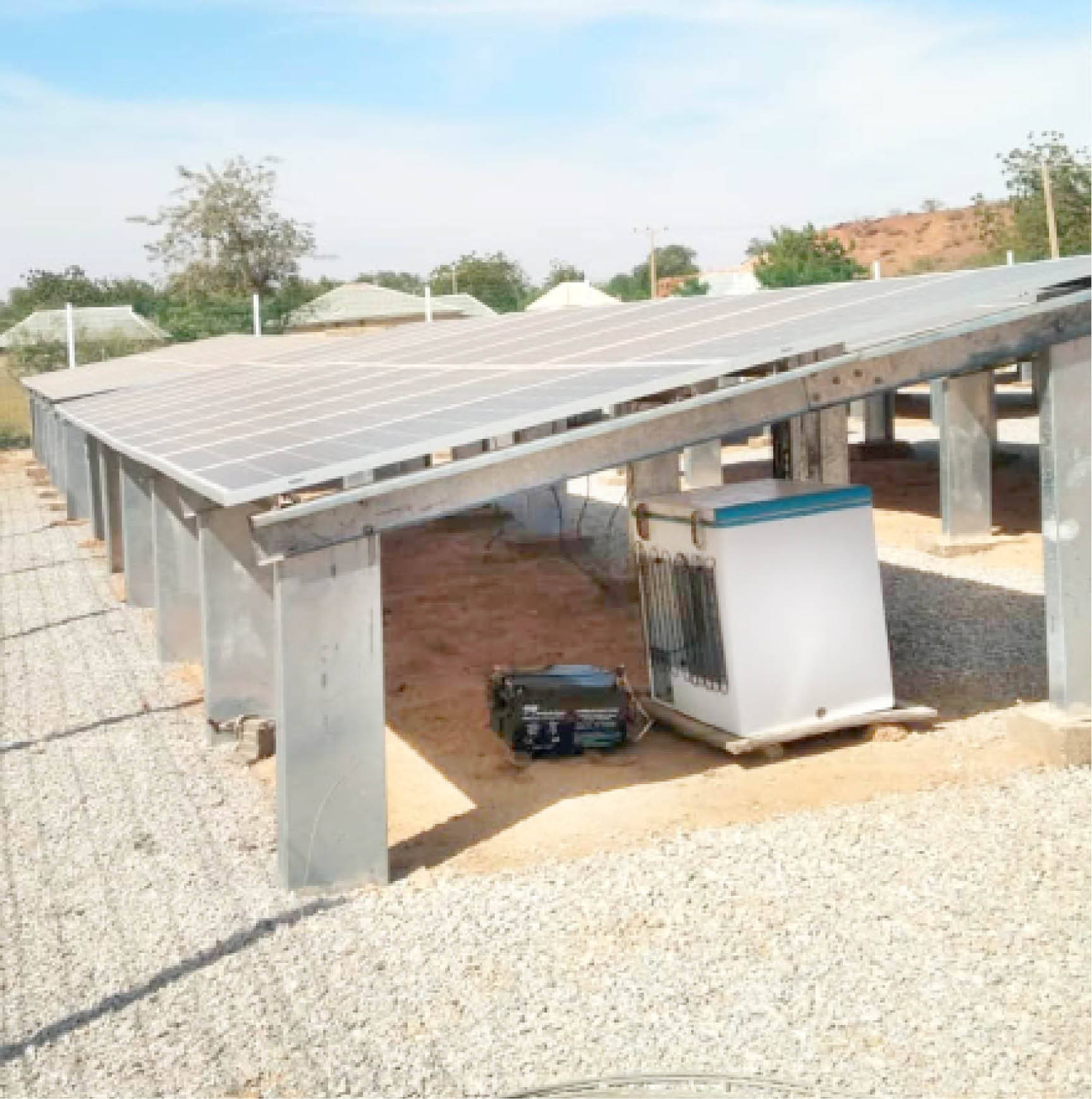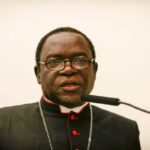Some critical renewable energy projects for generating 13,000 megawatts (mw) of electricity and reduce harmful emissions by 29,774 tonnes over 12 years are being delayed due to releases of funds under the N25 billion Green Bonds, Nigeria. This is despite a 220 per cent oversubscription rate when they were issued in 2017 and June 2019.
The Federal Government further plans to roll out the third phase of the bond by March 2020, investigation by Daily Trust on Sunday reveals.

In 2017, the Federal Ministry of Environment initiated the Green Bond as part of Nigeria’s obligations under the United Nations Framework Convention on Climate Change UNFCCC). The ministry, along with the Ministry of Finance and the Debt Management Office (DMO), implements projects to achieve reduction in emission targets. It raised N10.6b between 2016 and 2017 and committed it to many projects for climate change. The critical projects meant to be financed are in line with the Nigerian Renewable Energy and Energy Efficiency Policy (NREEEP) approved by the Federal Ministry of Power in April 2015.
It is also a driver for the Rural Electrification Strategy and Implementation Plan (RESIP) of the Rural Electrification Agency (REA) in the power sector.
Statistics from the Federal Ministry of Power (FMOP) puts Nigeria’s energy mix at over 70 per cent fossil fuel with less than 30per cent running on Renewable Energy Sources (RES) with huge implication for climate change.
Records obtained from the Ministry of Environment indicate that multiple power projects would be implemented to improve the RES output on the energy mix by two per cent annually, growing by 30 per cent by 2030.
These projects, mainly solar photo-voltaic (PV) off-grid (not connected to the national power grid), could reach a 13,000mw target by 2030. That would be 42 per cent more than the present 7,500mw national grid generation capacity of Nigeria. However, the current electricity demand is estimated at 25,000mw, records show.
The Green Bonds also have other focal areas that include providing renewable energy across 37 federal universities and seven teaching hospitals, afforestation and clean transportation programmes.
They were first issued in December 2017 for N10bn, but was oversubscribed, with government realising N10.6bn. The second phase of N15bn was issued in June 2019 and got a higher 220 per cent oversubscription rate, yielding N32.95bn, notes from DMO showed.

In the first phase, the authorities said 45 unserved rural communities would be electrified to benefit 300,000 people through the Renewable Energy Micro-Utilities (REMU), an initiative of the Ministry of Power.
It was to do a pilot project that could impact on 6,667 persons, generate about 667 jobs and reduce emission by 195 metric tonnes (mt) annually. The success will then ensure it was replicated in 44 other communities.
According to the latest DMO update on the spending of the first Green Bond, of the 10.6b proceeds, N8.70bn was utilised towards off-grid solar projects, comprising the Renewable Energy Micro-Utilities (REMU) implemented by the Federal Ministry of Power; and the Energising Education Programme (EEP) implemented by the REA. They were to reduce emissions by 29,774 carbon dioxide per tonne annually.
The remaining N1.99b was channelled into Afforestation Programme (AP) towards reforestation projects, contributing to an emissions reduction of 12,879Co2/t annually.
A further breakdown of the energy projects funding shows that the REMU pilot in Sokoto gulped N146.07m, which is 1.37per cent of the N8.7b fund allocated to it. At least N8.6b, accounting for 80per cent of the proceeds for energy projects is for the EEP handled by the REA.
Torankawa: Residents see light 5 years after
With the Torankawa power, residents said they were happy as they had not had power supply for five years. The Torankawa plant consists of 125KVA DC/AC inverter, 60 kilowatt (kw) solar PV modules, 216 kilowatt hour (kwh) battery bank and a 100kVA diesel generator as back-up.
It was completed in January 2019 and commissioned in February 2019 by the Department of Renewable and Rural Power Access (RRD) of the Ministry of Power.
Officials said the N146m project had been providing 24-hour power supply to 350 households and 20 small businesses, covering 1,750 people. It also supplies power to 50 units of 100 watts LED streetlights, five mosques and a community irrigation farm.
The system has a four kilometre town distribution network (TDN), and the installation of 100 customers was upgraded, including the installation of smart meters and local electronic vending system.
On commissioning, it became the first hybrid power plant connected to the grid in Nigeria, Faruk Yusuf Yabo, an engineer and director, Department of Renewable Energy and Rural Power Access at the Ministry of Power said. It was linked to the grid network of Kaduna Electric (DisCo).
During a visit to the power plant in Sokoto 11 months after it was commissioned, our reporter found that the project was still active and serving the customers.
Kasimu Muntari, a provision store owner at the community has his store powered from the plant. “It is working and we have not had problems with it since then. I buy a token of N3,000 to N4,000 monthly for my meter.
“Once it has issues, the operators come to do maintenance on the plant. Before this was commissioned, we had stayed without power in this village for five years. We used to have electricity, but windstorm destroyed them and Kaduna DisCo failed to fix that for five years,” Muntari explained.
Among other residents, Adamu Zubair also said his business had improved, especially in the sale of sachet water because of the improved power supply. “I sell water. Today, I have seen improvement more than before because we have better power supply.’’
Zuwaira Aminu, another shop owner in Torankawa said, “If you have a television set and other electronics, the token for the meter may only take you two weeks, but in all, we don’t spend more than N3,000 in a month. The experience has been good, especially for this community, which was forgotten for nearly six years.’’
Solar grids: 44 others hang, 298,250 persons can’t access electricity
World Bank reports on the Nigerian Electricity Supply Industry (NESI) states that over 40 per cent of the 200 million Nigerians have access to the national grid while 60 per cent others representing 120m Nigerians are off the grid.
While the Torankawa REMU pilot project has demonstrated the commercial viability of the hybrid solar plant across communities, Daily Trust on Sunday, however, found that almost two years after it was initiated, 44 other projects are yet to take off across the six geopolitical zones in Nigeria.
Although the Torankawa pilot only impacted on 350 households and 1,750 people, the absence of the 44 other community projects means that 298,250 persons have no access to electricity despite having provision by the bond to cover them since 2017.

In Kaduna, miscreants crash mini grid
In July 2017, the Ministry of Power initiated the first REMU mini-grid project in a small rural village of Pakau in Kaduna State. The Pakau REMU project was implemented by the ministry but not from the green bond.
Our reporters visited the village multiple times and found that the REMU grid similar to Torankawa had stopped operation several times this year.
Following an initial investigation by Daily Trust on Sunday, ministry officials said it had been fixed. However, a visit to the site this month revealed an eyesore as the multimillion naira project went faulty again.
“We are going to stay in darkness this festive season because the officials have refused to come and fix it,” Stephen Yusuf, a resident of Pakau community said.
It was also found that unlike Torankawa, where the residents pay to get electricity, Pakau residents have meters but billing has not commenced.
Mr Sunday Moses, another resident, confirmed this, saying, “We don’t pay yet for the power but we were told we would be paying. If the light is consistent, we will pay.”
It was learnt that the project was executed by Golden Grid Solutions International (GGSI), a Washington- based firm with a Nigerian board member. Our reporters gathered that the plant faces threat of invasion from some community youths.
They had formed a habit of extending power from the mini grid to other communities; and once the system exceeds its capacity with that action, it trips on fault, an engineer supervising the plant operation confirmed.
N2bn fresh projects fail timeline
The second Green Bond issued in June 2019 yielded N32.93b instead of the N15bn offer value, according to the DMO. About N2bn was dedicated to critical renewable projects targeted at mitigating the effects of climate change, especially on the reduction of Green House Gasses (GHG).
However, these projects slotted for Abuja and Katsina have failed the December 2019 completion timeline indicated in the bond guideline, our investigation shows.
According to prospectus information obtained from the DMO on the fresh projects, the projects were to be completed six months after the bonds were issued and oversubscribed.
It was learnt that energy efficiency projects were part of the mitigation programme of the climate change-driven programme of the Ministry of Environment.
The projects were part of the N8.264bn dedicated to power in the phase 2 bond. While the larger chunk of N7.067bn is for continuing the REA programme in 37 federal universities, our reporters investigated the N1.197bn projects across Abuja and Katsina State.
The three projects, comprising solar power for the federal secretariat in the Federal Capital Territory (FCT), Abuja, solar streetlights and completion of the 10mw Katsina wind farm, could add 10.85mw energy if they were delivered, and could have impacted on 1.751m people, the bond II guide said.
The projects will further reduce emission by 9,311 metric tonnes of carbon dioxide annually, while an estimated 1,752 jobs could have been created in 2019.
Analysis of the projects’ expected deliverables if they were completed as expected in December 2019 shows that the 10mw Katsina wind farm, although an existing project, has a yearly energy production of 16.7m kw.
The ministry has spent over N3b on it but without any impact on the national grid. It, however, got N487m from the Green Bond II. Data for the project showed that 16.7m kwh will be generated annually, but consumers will pay N35/kwh for that. That should generate N587.5m every year.
A REMU project in this phase has N130m allocated to build 100 kilowatt power project capacity. It is targeted at providing power for streetlights in the FCT.
It is expected that it would cause a yearly energy production of 292,000 kilowatt hour to power the streetlights. The REMU FCT streetlight energy will be paid to the ministry by the FCT Traffic Department at N60 per kwh adopted cost when operational.
The bond is also financing solar mini-grids for selected Federal Government building at N580m to generate 750kwp. The mini grids project for the Abuja Federal Secretariat is to provide 750kw and a yearly energy production of 2.2m kwh.
Our survey across the project sites shows that there are no signs of any solar project. The wind farm has not been commissioned despite the fact that the Federal government set six failed commissioning timelines already, with the seventh being December 2019.
Also across the streets of Abuja city, there is no fresh sign of any solar panel installation for the streetlights. The ones that operate are those installed in 2015 under the former administration of Goodluck Jonathan.
As projects lag, bond repayment looms
Although the multiple projects are lagging, timeline to repay the bonds is fast approaching. According to the 2019 half year report by the Central Bank of Nigerian (CBN), the Federal Government, since 2018, began to pay a 13.5 per cent return rate semi-annually to subscribers for the five-year N10.6bn Green Bond. It will continue that until December 2022 when it will pay back the lump sum.
For the second phase of seven-year Green Bond, which is N15bn but yielded about N32bn, government started paying 14.5 per cent interest rate since July 2019 and will continue until June 2026.
“It is very important that the projects are completed so that they can begin to yield income and contribute to the bond repayment plan,” a ministry official said when asked if government had considered the implication.
Ministry: Procurement yet to begin, to concession old projects
The Federal Ministry of Power was contacted for response on why the fresh power projects missed the December 2019 timeline. Officials confirmed the N2bn solar power projects in Abuja and Katsina but said there was no procurement yet.
Monies meant for the projects have not been released to the ministry, and that stalled the commencement despite having a December 2019 target, it was revealed.
Responding formally, the director of Renewable, Faruk Yusuf said, “We see this as budgetary allocation to the ministry. We got a letter about three months ago from the Ministry of Environment, that money would be credited, or is being credited to the account for us to do projects; but as far as we are concerned, until such money is confirmed credited, we cannot go into any commitment.
“Until we do that, obviously no procurement is going to be done. As far as I know, we have not gotten any new procurement, the one we have done so far is the one of 2017; and the project is there and operational,” said Yusuf.
On the existing projects, the director said Torankawa was a pilot project that was demonstrated to show the commercial viability. He called on investors for more of such mini grids to solve the rural power access challenges.
Yusuf also confirmed challenges with the Pakau mini grid in Kaduna State, saying the ministry was doing procurement for concessioning of three mini grids – the Pakau and Gnami solar grids in Kaduna and the Torankawa in Sokoto State.
He said, “We believe that this would help for better management, and hopefully, before the end of first quarter of 2020, that would be completed.”
That would take care of the challenges at Pakau mini grid when an operator resides in the community to monitor the project and have the residents pay for the energy, the director added.
Green bond successful, phase three begins March – Minister
The Minister of Environment, Dr. Mohammad Mahmood Abubakar, was interviewed on these projects. He said one of those projects was the provision of solar energy, and that is part of the Energising Education Programme (EEP) where federal universities are being powered by solar energy.
“I was present recently when the vice president commissioned that of Bayero University, Kano. The one for other universities are being worked on, and soon they will be commissioned, just as we have commissioned the first seven,” Dr. Abubakar said.
Asked about the fresh power projects in the second phase, the minister said, “They are ongoing. Even in the EEP, we still have more universities coming on board. Projects have a timeline of initiating them all the way to completion, but these are ongoing.”
The minister also disclosed plans to launch the third Green Bond by March 2020 and how the proceeds would be used. “We have now initiated the third Green Bond, which will go into agriculture, water and transportation,” he noted.
This investigation was funded by Daily Trust Foundation and supported by MacArthur Foundation.




